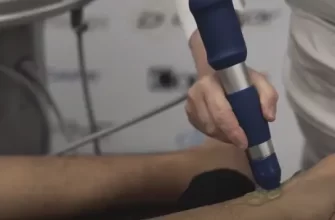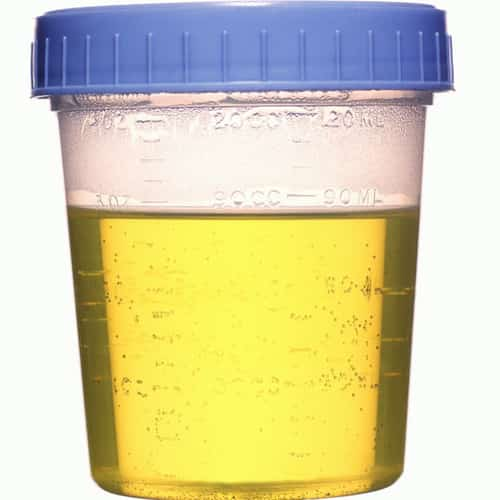While they both operate on the principle of delivering shock waves to the affected area, they differ in technique, depth of penetration, and the types of conditions they’re best suited for. Here’s a closer look at radial and focused shockwave therapy.
Radial Shockwave Therapy
Radial shockwave therapy (RSWT) uses a pneumatic system to generate mechanical pressure waves that spread outwards in a radial pattern. Picture the ripples created when a stone is thrown into a pond, and you have a fairly good visual representation of how the energy moves during RSWT.
Applications:
RSWT is particularly effective for conditions near the surface of the body and is often used for:
- Plantar fasciitis
- Achilles tendinopathy
- Tennis elbow
- Jumper’s knee
Pros:
- Non-invasive with no need for anesthesia
- Short treatment sessions (typically 5-10 minutes)
- High level of patient tolerance due to adjustable intensity
- Offers immediate relief for some patients
Cons:
- The broader spread might be less effective for deep-seated issues
- May require more sessions compared to focused shockwave therapy
Focused Shockwave Therapy
Focused shockwave therapy (FSWT), on the other hand, uses electromagnetic or piezoelectric sources to generate high-pressure acoustic waves. These waves are focused to target precise deep tissue areas, delivering energy at specific points to stimulate the desired healing effects.
Applications:
FSWT is used for deeper or more chronic conditions, including but not limited to:
- Non-healing ulcers
- Deeply embedded tendinopathy
- Bone fractures that are slow to heal
- Calcific shoulder tendinitis
Pros:
- Directs high energy to the desired depth; precise targeting
- Potentially more effective for deeper tissues and chronic conditions
- Generally considered to have a higher success rate for certain conditions
Cons:
- Might be slightly more uncomfortable than RSWT, sometimes requiring local anesthesia
- Longer treatment sessions (average of 20 minutes)
Side-by-Side Comparison
| Feature | Radial Shockwave Therapy | Focused Shockwave Therapy |
|---|---|---|
| Method | Pneumatic (air pressure) | Electromagnetic or Piezoelectric |
| Energy Delivery | Diffused, radial pattern | Direct and focused |
| Depth | Superficial tissues (1-3 cm) | Deep tissues (up to 12 cm) |
| Indications | Soft tissue injuries close to the surface | Deep seated or chronic conditions |
| Session Duration | Shorter (5-10 minutes) | Longer (around 20 minutes) |
| Treatment Frequency | May require more sessions | Fewer sessions might be needed |
| Comfort | Generally tolerable without anesthesia | May require anesthesia for comfort |
| Success Rate | Good for indicated conditions | Potentially higher for deep tissue conditions |
Ultimately, the choice between radial and focused shockwave therapy should be made by a qualified healthcare provider based on the specific medical condition, the depth and area that needs to be treated, and the individual patient’s tolerance and response to the therapy.
Both therapies hold promise in various therapeutic areas and have been supported by clinical research, though it’s crucial to note that individual experiences and outcomes can vary. As with any medical treatment, discussing the options with a healthcare professional is key to making the right choice for your health and well-being.










